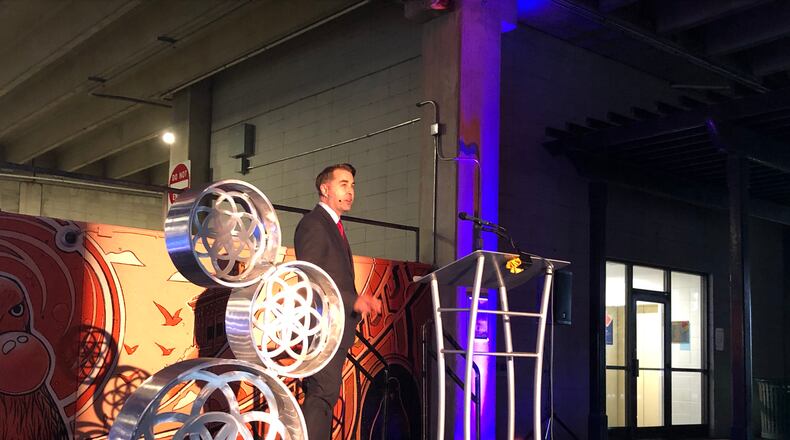Smith noted fast-growing, Spain-based Saica Group soon will have a groundbreaking ceremony in the city as one of several international businesses in Hamilton.
“For the people that were so upset about losing 150 years worth of papermaking in Hamilton, Ohio, Saica is one of the fastest-growing paper manufacturers in the world,” he said of the company, whose name is pronounced SAY-ka and which makes corrugated boxes.
“They compete with International Paper and they compete with the big boys across the globe,” Smith said.
The city’s downtown also has gained more of an international flavor, he noted during his speech.
Companies like Saica and 80 Acres Farms, which has a European joint-venture partner called Infinite Acres, have been bringing visitors from European countries like Norway and Amsterdam to town.
Italian company Salvagnini, whose North American headquarters are in Hamilton, also is attracting people from around the world, he said.
“It’s just so cool to see that type of energy downtown,” Smith said.
The former Champion Paper mill, meanwhile, is being transformed into what will be North America’s largest indoor sports facility, which also will have a convention center, at least one hotel, plus stores and restaurants. It is expected to attract more than a million visitors per year when it becomes established, after opening in December, 2021. Spooky Nook has attracted developers' attention, and they have been showing interest in moving to town.
Smith once again explained it was key to develop the downtown and Main Street as a top priority because, “We had to bring Hamilton to a certain point where we could actually generate revenue (because) we had to pay for basic services.”
“I’ve heard a lot of comments over the 10 years about ‘That’s stupid. Why is so much money being put into the parks conservancy. Why aren’t you putting it here? Or why are you doing this?' It was about creating an environment that businesses wanted to come, because our primary revenue stream is local income tax. We had to build the income-tax base. So that was really the focus.”
Now that the city has stabilized its budget, neighborhoods will “be a heavy focus, the next 10 years,” he announced.
Key focuses will be getting rid of dangerous, blighted empty buildings, and helping to fill neighborhood buildings that have “good bones,” he said.
Many of Hamilton’s fires happen in empty buildings where people get inside and either are trying to stay warm at night, or “just shenanegans,” he said. He noted the city is equipped with its ever-strengthening 17Strong community outreach organization and its Department of Neighborhoods, created in the past year.
For next year, City Council will be considering a proposed budget that increases funding to code enforcement, and funds to demolish houses. For neighborhoods buildings with “great bones” and “great architectural appeal” but have been vacant, he hopes to propose unique ways to help people preserve and occupy them.
Also, the city will be proposing legislation that takes more steps to hold accountable owners of empty residences, as it already did with vacant commercial and industrial buildings.
“One house can bring an entire block down,” he said. “We all recognize that.”
About the Author


